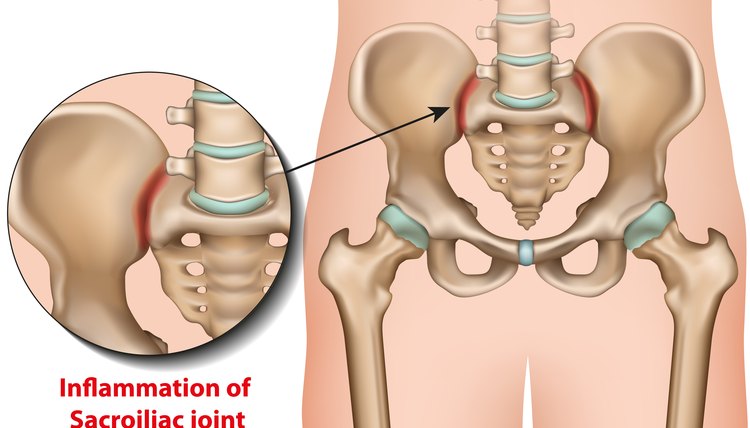Golf Swings and the Sacroiliac Joint

Whether you are an amateur golfer or a professional golfer, you know that your golf swing places many demands on your back each time you hit the golf ball. You may have noticed soreness, fatigue or joint pain in your back after a round or an afternoon at the driving range.
Many of the most common golf injuries come on the anterior side of the body, and one area specifically where golfers experience discomfort is in the sacroiliac joint of the lower back. Understanding how your swing impacts your sacroiliac joint can help prevent future golf-related back injuries and the lower back pain that might keep you off the course.

The Sacroiliac Joint (or SI joint)
You have two sacroiliac joints located at the base of your spine between a section of vertebrae called the sacrum -- the fused vertebrae at the end of your spine -- and the iliac bones of your pelvis.
These joints have a small range of motion, but they are easily irritated, leading to hip and low back pain. Stress, strain and overuse of lower extremities like your hamstrings, abdominal muscles, hips or lower torso can cause sacroiliac joint pain.
The pain from this common golf injury tends to radiate away from the joints themselves and into the surrounding muscles and ligaments including the back, thigh, groin and lower abdominals.

Golf Swing and the Lower Back
The sacroiliac joints provide very little benefit to your swing mechanics, but they can bring back problems to your game. From address to follow through, you bend, tilt and twist your hips and lower back, causing lots of dysfunction within your mid to lower body. That hip motion utilizes all the muscles in the core of your body -- your hips, abdominals, obliques and lower back -- which all eventually tie into the sacroiliac joints.
Because those joints don’t move much, they lend only a small amount of flexibility during your swing. However, repeated swings can lead to overuse and imbalanced core muscles, producing painful irritation in the sacroiliac joint and a loss of motion in your hips, lower back and pelvis.
Preventing Sacroiliac Injury
Maintaining flexibility in muscles around the region may be the best way to prevent SI joint pain or restriction in sacroiliac joints that can affect your golf swing. Regularly stretch your hamstring, glute, hip joint and lower back muscles before and after golf and on off days.
For your hamstrings, sit on the floor with your legs in front of you. Reach forward toward your toes while keeping your back straight and your head up. Hold for 30 seconds, then release the stretch. You can also do this individually, one at a time, on both the left side and the right side.
To work your glutes and lower back, lie on your back with your knees bent up toward the ceiling. Slowly lift your pelvis and lower back off the floor by tightening your glutes and hamstrings. Hold for 30 seconds and release the stretch.

Treating the Sacroiliac Joint
Chronic pain in your lower back can be a sign of a common injury to the muscles around the sacroiliac joint or the joints themselves. You should have those injuries looked at by a sports medicine doctor or at a chiropractic office, who may recommend rest, ice or heat therapy, anti-inflammatory drugs or physical therapy to treat and heal the injury.
Sometimes, surgery, including fusing the joints, is necessary. A chiropractor may be able to relieve pain or correct the imbalances through spinal manipulation and related stretching, massage, electrical stimulation and ultrasound.
Injury Prevention while Perfecting your Swing
- Warm up your body before you start playing golf. This will help to loosen up your muscles and joints, including your sacroiliac joint.
- Stretch your muscles regularly. This will help to keep your muscles flexible and prevent them from getting tight, which can put stress on your sacroiliac joint.
- Use proper form when you swing the golf club. This will help to minimize stress on your sacroiliac joint.
Writer Bio
David Raudenbush has more than 20 years of experience as a literacy teacher, staff developer and literacy coach. He has written for newspapers, magazines and online publications, and served as the editor of "Golfstyles New Jersey Magazine." Raudenbush holds a bachelor's degree in journalism and a master's degree in education.
